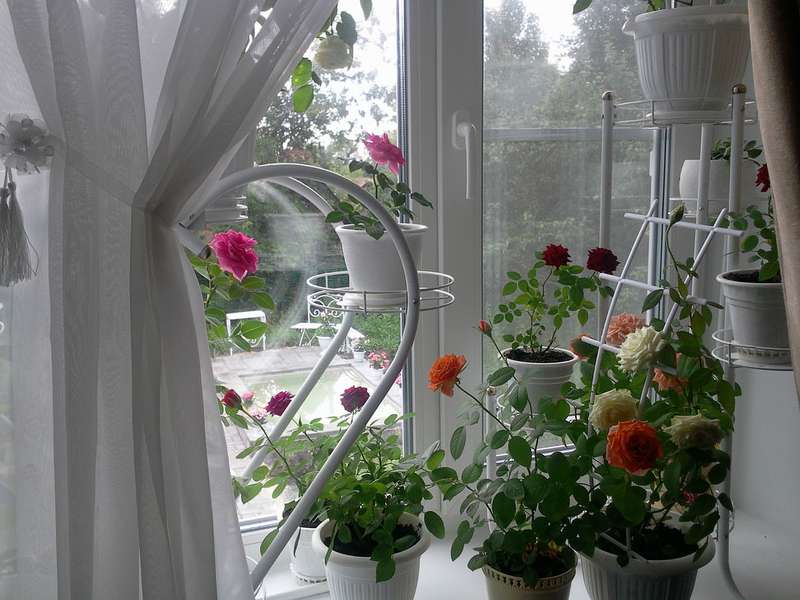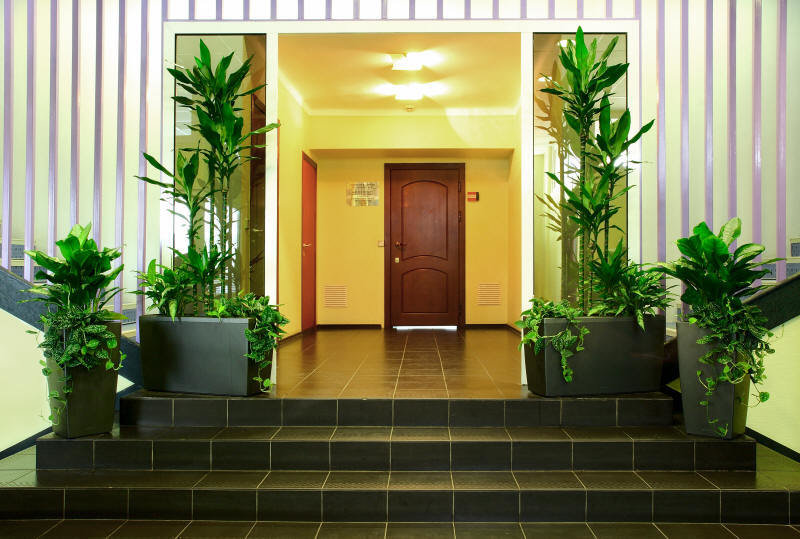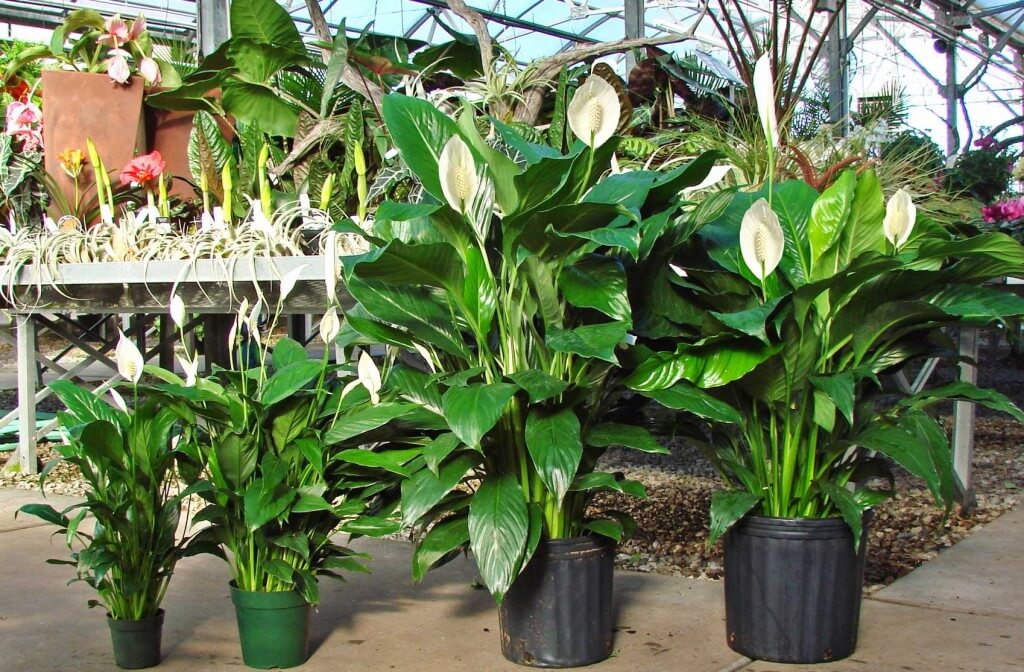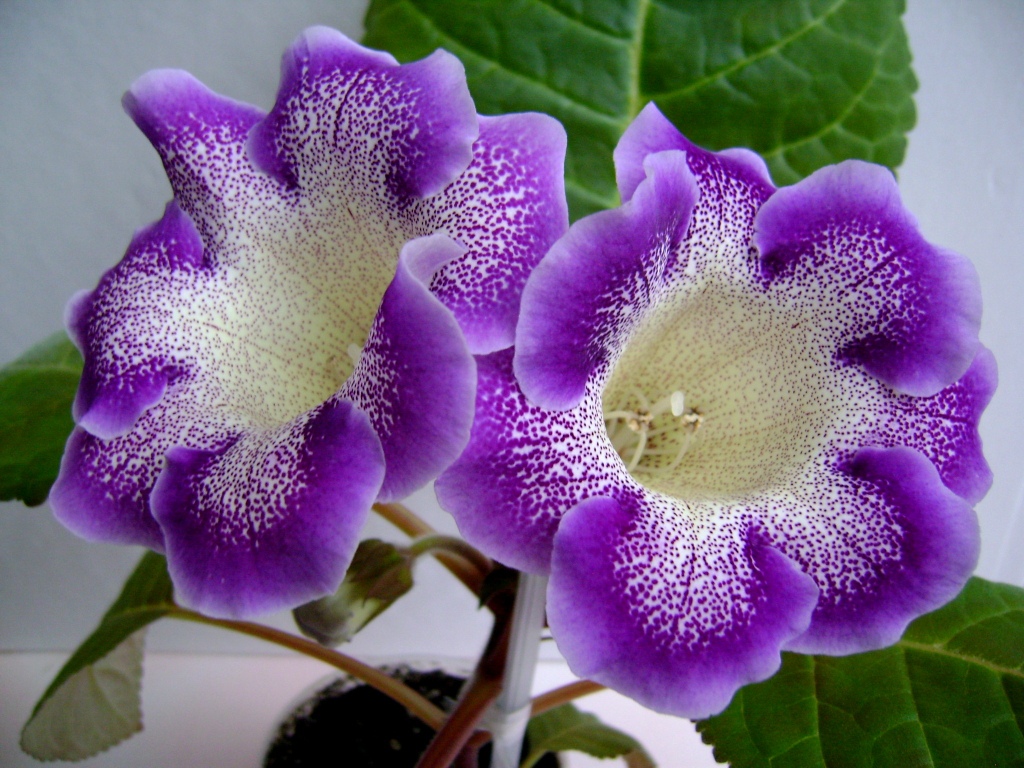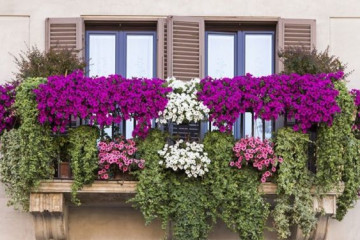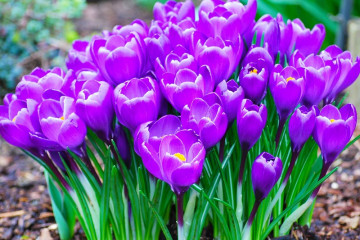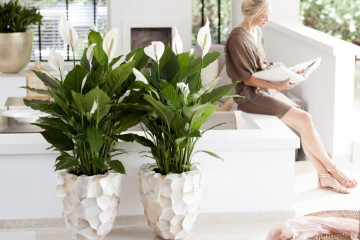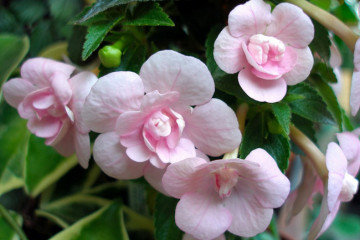Houseplants and beautiful house flowers
Content:
Not a single cozy apartment is complete without houseplants. Some bloom violently and delight the eye, others remind of tropical countries, and still others twist, entwining everything with their greenery. What type of indoor plants should you choose to add flavor to your home?
Indoor plants can be roughly divided into flowering and non-flowering plants. The most popular are representatives of the flora, pleasing to the eye with their flowering. However, not all flowering plants can decorate a home for years.
Having chosen home indoor flowers, it is recommended to study their growing characteristics, watering regime, the presence or absence of toxic substances in the juice of the green part. It so happens that the hostess chooses a green beauty for her interior, rejoices at the carving of the sheet and high growth. Simultaneously with the appearance of a new potty tenant in the house, one of the family members may suddenly feel a fit of suffocation, especially when the windows are closed. This is due to the fact that some plants in the process of life release toxic substances, but attract people with their appearance.
Types of indoor plants
From a scientific point of view, indoor plants are divided not only into flowering and evergreen. They can be classified according to a wide variety of criteria: by belonging to the climatic zone, type of root system, method of reproduction and many others.
All indoor flowers are divided into three large groups:
- decorative blooming (spathiphyllum, anthurium, daffodils);
- decorative flowering potted plants (orchids);
- decorative deciduous (ivy, ficus, monstera).
Bulbous plants
Bulbous flowers are considered some of the most spectacular in appearance during the flowering period. Many are able to delight for a long time with bright flowers and bizarre shapes of buds. Among them are zephyranthes, clivia, amarkrinum, ledeburia, villlota, hemantus. All bulbs love warmth, light and moisture. Therefore, if a representative of this class does not bloom for a long time, you should pay attention to the composition of the soil, timely watering and the amount of sunlight received by the flower.
Indoor trees
The so-called indoor trees are widespread. They are miniature copies of wild giants, capturing the eyes of everyone who sees this miracle. The most popular representative is the Bonsai tree. Exotic appearance, strong trunk and dense green crown are all the advantages of this Chinese plant.
Among other equally well-known ornamental trees, one can distinguish: bottle, ficus, fat tree (money tree), rose tree.
Bromeliads
This is the name of flowers, mainly with short trunks and a bunch of leaves collected in a rosette. The most popular can be called pineapple. Almost all representatives of this class bloom with unusual flowers of bizarre shapes, which gave them such popularity: bromelia, guzmania, acanthostachis, nidularium, tillandsia, vriezia.
Ampel plants
Ampelia are home flowers with curly shoots. They are planted in hanging pots, allowing long branches to hang freely. Interior decoration in a vertical direction. Cissus belongs to ampelous, it is called indoor grapes or a weaving birch. It is widespread among vine lovers. Cissus does not bloom. There are a number of blooming ampelia, among which petunias are popular, as well as surfinia, hoya and fuchsia.
Succulents
This class breaks all resilience records. The most unpretentious plants, as a rule, do not require large pots and close attention. Designers love to use them in composing various compositions of potted flowers, because the pot can be successfully replaced with a glass hemisphere, with a small amount of substrate.
Large indoor flowers
Large plants are often used to decorate offices, sales areas, halls, lobbies. They enrich the air with oxygen and give comfort to non-residential premises.
Indoor flowers with large leaves
Large-leaved flowers are also grown in apartments. The exotic look of spotted large greenery visually changes the interior, adding color. In small spaces, decorators tend to place one or two green accents. The favorites of modern trends are calathea, monstera, aphelandra, as well as fern.
Flowers with fleshy leaves
Crassula, or money tree, has thick, dense leaves. It does not grow quickly, but with proper crown formation, a striking resemblance to a tree can be achieved. Many succulents, due to their characteristic of accumulating liquid in green tissues, have thick leaves. Zamioculcas can be safely included in the list of plants with fleshy, dense leaves.
Small indoor plants
Among the beautiful indoor flowers, a special place is occupied by miniature representatives of the flowering world of plants. They were created artificially by breeders and are exact replicas of their full-sized ancestors.
Mini violets
The scientific name is dwarf synpoli. The leaves and the plant itself are several times smaller than the progenitor, but this does not affect flowering. Mini violets bloom as bright and unforgettable as full-size relatives.
Miniature Kalanchoe
The bred miniature Kalanchoe will not grow more than 15 cm in height. The dwarfism did not affect the flowering, these babies bloom with beautiful cream or red flowers.
Mini Gloxinia
Miniature gloxinia do not require special care and maintenance conditions. They bloom, like normal sized gloxinia, in summer. After flowering for the winter, the plant goes into a dormant period. The leaves die off, only one tuber remains, from which a new green part will sprout in the spring, followed by flowering.
Mini roses
The potted beauties resembling their garden cousins, although they are smaller, have not lost their pink feature - a typical aroma. The plant blooms just as beautifully, the leaf shape is identical to life-size roses.Apartment maintenance requires compliance with the temperature regime - mini-roses die at high temperatures. The optimal indicator for growing and flowering is + 18˚С. Already at + 22˚C, the plant becomes hot, and it may die.
Fittonia
A small indoor flower loves warmth and diffused bright light. Fittonia attracts with an interesting pattern of leaves - clear white lines contrasting with greenery make the foliage look like a quail's egg.
Soleirolia
Indoor flower with miniature leaves has ampelous shoots. Soleirolia does not require any special care. Of the additions to regular watering, spraying during the hot season can be noted.
Popular houseplants flowering
Despite all the diversity of the plant world, suitable for indoor keeping, there is still a certain "standard set" of flowers that live on window sills and in hanging pots.
White indoor flower
Perennial spatsiphyllum can be seen, if not in everyone, then in half of all flower growers for sure. The perennial, absolutely not requiring special attention, pleases with its large white flowering. Breeders have bred varieties with large leaves. Spatsiphyllum-giants are not capricious, they bloom in the same colors as the classic relative.
Abutilon hybrid
The only growing popularity is abutilone - a blossoming tree flower. May exceed human height in height. Flowering, depending on the variety, can be red, burgundy, orange, coral.
Although he is light-loving, he cannot stand the heat. The maximum possible temperature in the spring and summer months should not exceed 22 degrees Celsius. In winter, this figure is even lower - + 15˚С. With the beginning of the heating season, it is wiser to place a pot with a flower on a heated balcony, where it will be comfortable until spring.
Abutilon can be propagated by seeds collected after flowering. To obtain strong and disease-resistant plants, the seed must be hardened. Sowing begins in February - March, germination can take up to 3 weeks.
Gloxinia home
Similar in appearance to violets, gloxinia has a significant difference - its root system is in the form of a tuber, and in winter it retires. Each time after wintering, the tuber needs to be woken up in order to accelerate the appearance of leaves, treating it with a solution of potassium permanganate against possible diseases and growth stimulants for active awakening. To help gloxinia move away from sleep, the tubers are placed on a peat pillow, regularly sprayed and kept at a temperature of at least + 23˚С. If a tuber looks shriveled, with an uneven surface, it is no longer alive.
Venus flytrap
The predatory venus really hunts flies, thereby obtaining additional food for itself, but this does not negate regular watering. She is sensitive to the composition of water, so the water supply as a source will not work for her. The water must first be filtered. The flycatcher is photophilous, will not survive in the shade.
Calathea
The variegated beauty pleases with its leaves all year round. From spring to autumn, it requires abundant watering and daily spraying. The most accessible calatheas for growing in apartments are Bahema, Veicha, Makoya. For irrigation, soft water without salt impurities is suitable. The flower can be transplanted by neat transshipment together with an earthen lump, having previously laid drainage on the bottom of a new pot. If you want to propagate the plant during the spring transplant, dividing the bush is allowed.The shoots, together with the root, are carefully removed from the main bush for subsequent planting.
Indoor plants are not flowering
Plants are not always grown indoors to contemplate the buds. Many evergreen representatives of the plant world, which do not have flowers, fell in love with flower growers for their irresistible crown.
Cissus
Like wild grapes, it can braid large vertical areas.
Ficus
Elastica variety has become widespread for dark glossy leaves. It grows into a fairly tall tree. There are varieties with weaving shoots.
Fern
With gorgeous green spreading leaves, it reminds of the tropics and creates a jungle atmosphere.
Tropical home flowers
Tropical representatives of the flora amaze not only with their unusual appearance, but also with a non-standard way of keeping.
Tillandsia blue (Tillandsia cyanea)
One of the representatives of non-standard cultivation - some of its species are fixed on a board or snag.
Homemade banana
In just a year, it grows 1 meter in height, with sufficient humidity and high temperature, it can bloom and even bear fruit.
Streptocarpus
The variety of species allows you to choose the flowering you like the most: from cornflower blue to bellflower.
List of popular plants alphabetically
BUT
Abutilon
Aglaonema
Adenium
Maidenhair
Azalea
Alocasia
Aloe
Anthurium
Amparagus
B
Balsam
Banana
Begonia
Bocarnea
Bottle tree
AT
Villot
Washingtonia
Vriezia
D
Gemantus
Hyacinth
Hibiscus
Hymenokallis
Hippeastrum
Hydrangea
Garnet
Guazmania
D
Dionea
Dieffenbachia
Dracaena
F
Jasmine
Z
Zamioculcas
TO
Cactus
Caladium
Kalanchoe
Calathea
Calla
Camellia
Kislitsa
Clivia
Codiaum
Coleus
Bell
Crossandra
L
Likuala
Lemon
Lithops
M
Mandarin
Monstera
Spurge
ABOUT
Orchids
P
Pandus
Fern
Pakhira
Ivy
Petunia
Poinsettia
R
rose flower
WITH
Sansevieria
Saintpaulia
Syngonium
Solyanum
Spathiphyllum
T
Tradescantia
Tillandsia
Fat woman
F
Ficuses
Philodendron
Fittonia
Fuchsia
X
Hamedorea
Chlorophytum
Hovea
Hoya
C
Tsikas
Cyclamen
Cyperus
Sh
Schlumberger
E
Aeonium
Episode
Eucharis
Ehmeya
YU
Yucca
I
Jacobinia
Plants in pots, waters, and they die. In order for plants to develop, you need not be lazy to look into the encyclopedia to find out the varieties suitable for growing, for example, in Lyubertsy or Nizhnevartovsk. If the plant is shade-loving, this feature should not be neglected. Getting smart about gardening can create a beautiful indoor garden.
